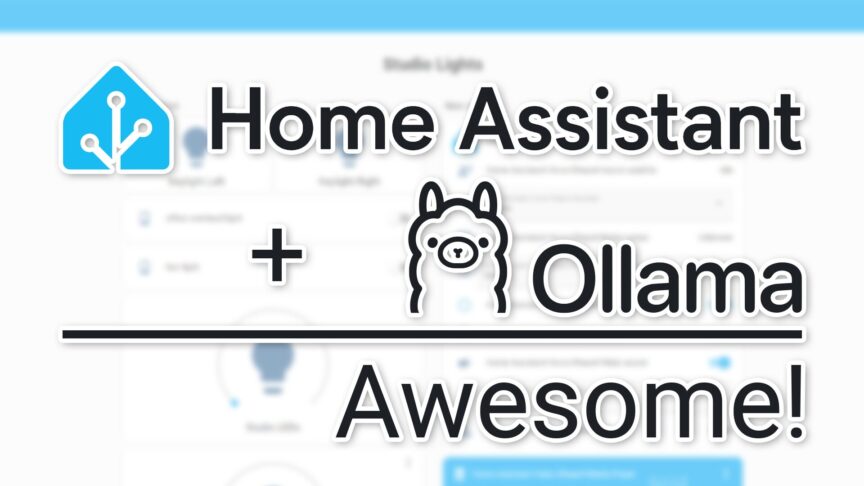In the quest for smarter homes, the integration of locally hosted artificial intelligence (AI) voice assistants has become a game-changer. One such promising solution is Ollama, which enables you to set up a voice assistant capable of responding to commands without relying on cloud services. This guide will take you through the process of setting up Ollama with Home Assistant, detailing key configurations and customization options for a voice assistant that fits your lifestyle.
Understanding the Basics of Ollama
Before diving into the setup process, let’s explore what Ollama is and the benefits of using it with Home Assistant. Ollama is a locally hosted AI model that allows you to control your smart home devices through voice commands or text prompts. By keeping everything local, you ensure better privacy and reduced reliance on internet connectivity. With Ollama, you can create a unique interaction style, giving your AI assistant a personality that suits your preferences.
Getting Started: Setting Up Proxmox
The first step in setting up your local AI assistant is to create a virtual machine (VM) using Proxmox. Here’s how you can achieve that:
- Install Proxmox: Ensure you have Proxmox installed on your server.
- Create a New VM: Set up a virtual machine for your AI assistant. You can reuse an existing VM for this purpose, like the one I already configured for Plex.
- Set Up GPU Pass Through: If your VM uses an Nvidia GPU, you’ll need to configure GPU pass-through for optimal performance.
- Select your VM in the Proxmox interface.
- Add your GPU as a PCI device.
- Ensure that the appropriate Nvidia drivers are installed to allow the VM to use the GPU effectively. Consult Nighthawk ATL’s GitHub repository for guidance on this process.
Configuring Docker for Ollama
Once your Proxmox environment is ready, the next step is to install Docker and configure it for Ollama. Here’s how to do it:
- Install Docker: Make sure Docker is up and running on your Ubuntu VM. I use this bash script.
- Create a Docker Compose File: This YAML file will define the services needed for Ollama AI.
- Run Docker Compose: After configuring the file, navigate to the directory where your Docker Compose file is located and execute:
docker-compose up -d
This command will deploy the Ollama instance along with the web UI component.
Integrating Ollama with Home Assistant
With Ollama up and running, you’ll need to integrate it with Home Assistant:
- Access Home Assistant: Open your Home Assistant dashboard and go to Settings, then Devices & Services.
- Add Integration: Click on “Add Integration” at the bottom right corner, then search for Ollama.
- Configure Connection: Enter the details for your Ollama instance, utilizing port
11434(http://192.168.0.69:11434). - Select the Model: Choose the appropriate AI model you intend to use, such as the latest version of LLaMA.
- Save and Test: Once added, test commands through the Home Assistant interface to ensure everything is functioning.
Customizing Your AI Personality
One of the standout features of using Ollama is the ability to customize its responses and personality. For instance, you can give your AI a snarky personality.
- Modify the configuration settings in the Home Assistant interface to define how your AI assistant should respond to queries.
- Set up instructions to guide the AI on its personality traits. For example:
- “You are sarcastic and unimpressed. Always respond with a hint of humor and disdain for tedious tasks.”
- My Intent instructions can be found here: https://code.dbt3ch.com/1ksm5ye4 (Using llama3.2)
Troubleshooting Common Issues
While setting up your local AI system, you may encounter issues. Here are a few common problems and solutions:
- Unresponsive Commands: Make sure all services are running in Docker by checking the logs with
docker-compose logs. Reboot your Home Assistant if needed. - Secure Connection Warning: If you receive a warning about insecure connections, it might be due to using HTTP instead of HTTPS. Consider securing your Home Assistant instance with SSL certificates.
Conclusion
Setting up a locally powered AI voice assistant with Ollama and Home Assistant can significantly enhance your smart home experience. Besides the added benefits of privacy and personalization, having a locally hosted system ensures reliability without fearing internet outages.
If you follow this guide, you’ll have your own charmingly sarcastic AI assistant up and speaking in no time!

